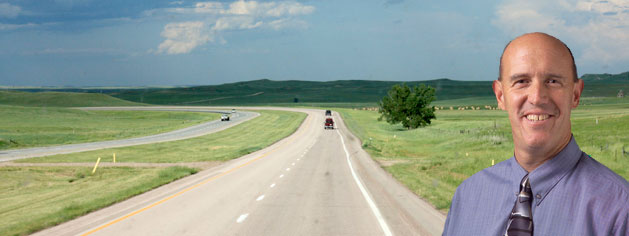
An interview with Grant Lichtman

Grant Lichtman is a nationally recognized thought leader in the drive to transform K-12 education, working with school, district, and community teams to develop their imagination of schools of the future, and their places in that future. Grant is a Senior Fellow of The Martin Institute for Teaching Excellence and his book is, #EdJourney: A Roadmap to the Future of Education.
For a long time I felt like I was screaming in the wilderness about educational change. Then, about 3 years ago, it seemed like people were open to talking about what needed to be done to move away from the industrialized model of education. Perhaps the conversations brought about by Sir Ken Robinson, Thomas Friedman in The World is Flat, and Daniel Pink in A Whole New Mind were starting to have an impact.
I started reading more about the process of innovation and change. We have lots of people in education who know about education and kids, but not how to make an organization change.
Waiting for the change to happen organically is going to take a generation. That is too long. If leaders are intentional, it can happen sooner.
I began wondering: “When do we stop talking about 21st century skills and schools? Why aren't we just doing it? We know how!”
As I was flying home from a conference, I decided I was at a place where I could take the time to explore this. I talked to my wife, took a sabbatical, and started #edjourney.
I reached out to schools I knew, and some I didn't, and asked if I could visit for a day to interview, ask questions, and delve deeper into the innovative work they were doing.
I spent three months, and drove 10,000 miles, to visit 64 innovative schools around the United States. During that time I filled 12 legal pads with notes, wrote blogs for every visit, and captured hours and hours of video.
Lots of writers and consultants in the corporate world know how successful change happens. But there is less understanding about how change happens in a knowledge-based organization. I took what I had researched about change and experiences from the school visits to create a resource to support administrators, teachers, parents, and anyone else who cares about the future of education.
This book is designed to provide ideas and lessons that people can implement strategically. Not everything needs to be done; what’s important is implementing these ideas in a way that works for your school.
So many people “get it” but don't know how to start the change. Every school I visited was doing something that at least one other school was trying to do.
Change is not as hard as we think. The idea in #EdJourney is to paint a picture for educators of what innovations in learning look like and then give them tools and resources to get there.
#EdJourney is NOT a cookbook. There are ideas you can use and implement, but it is not a recipe. I wrote the book in three parts, combining theory, stories from my visits with the voice of the educators I met, and my synthesis of the big takeaways.
The first section deals with the big obstacles to innovation. Why don’t and can’t schools change? Common obstacles are combined with stories from schools that have overcome them and how they have done so.
The second section describes what this new system of education looks like, and the final section helps readers answer the questions, “Where do we go from here?” and “How do we get there?”
There is a lot in the book about learning ecosystems. As a former geologist with a background in environmental science, I take the word ecosystem very seriously. Our current educational system is socially engineered to be repeatable and scalable, but what I found during my travels was that all schools that had innovated successfully had a strong learning ecosystem.
If you put an educator in this environment for a while, they get it! Educators recognize passionate and engaged learners. #EdJourney shares what this looks in a lot of places and a lot of different ways.
There are examples everywhere. Go visit them!

Follow us on Instagram for daily inspiration

Create a thought web, cluster, flowchart, or other graphic organizer for a lesson
Five ideas for creative classroom centers
Creative, digital book reviews
Fun and powerful ideas with animated characters

Wixie
Share your ideas, imagination, and understanding through writing, art, voice, and video.

Rubric Maker
Create custom rubrics for your classroom.

Pics4Learning
A curated, copyright-friendly image library that is safe and free for education.

Wriddle
Write, record, and illustrate a sentence.

Get creative classroom ideas delivered straight to your inbox once a month.
Topics